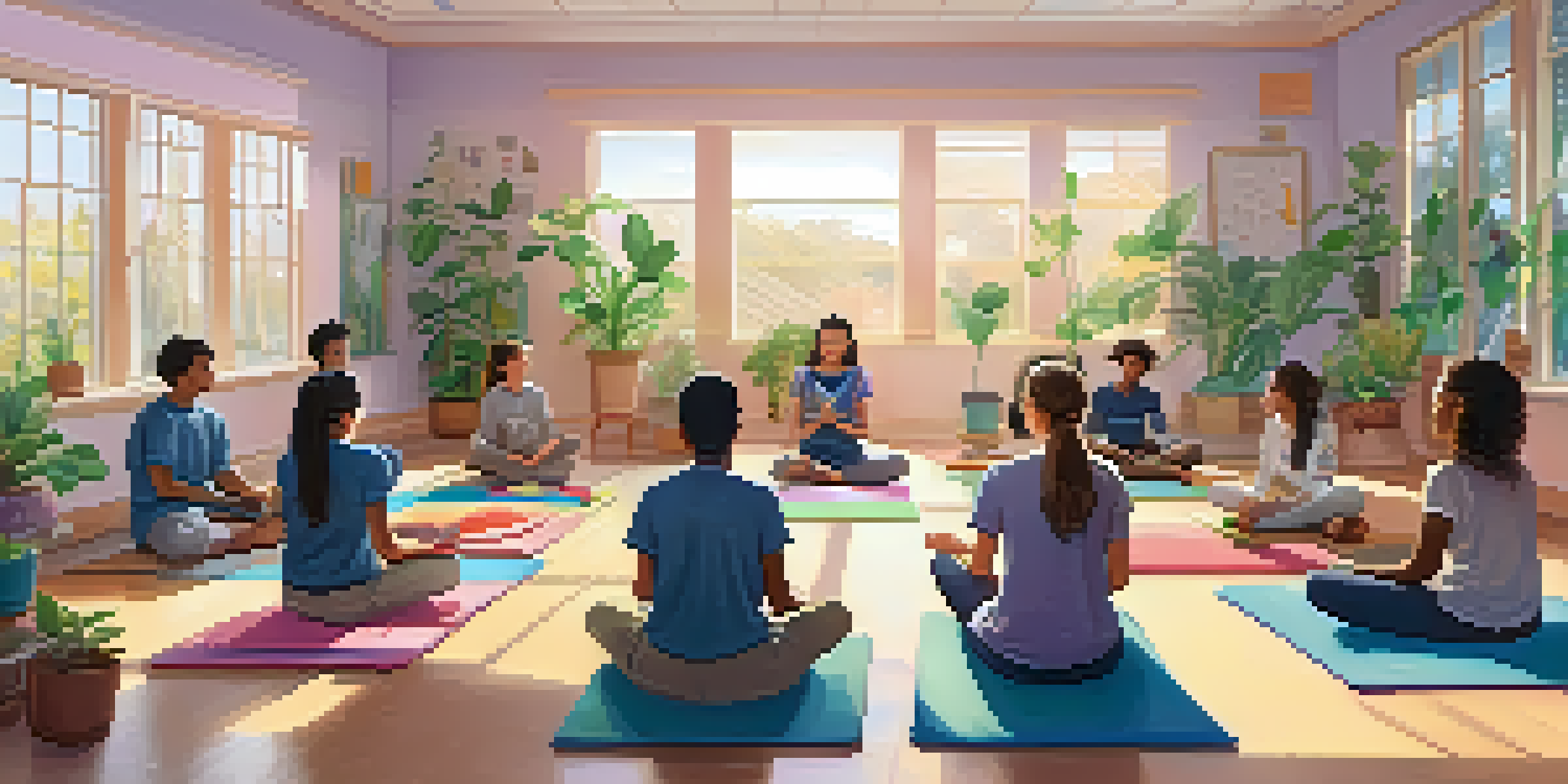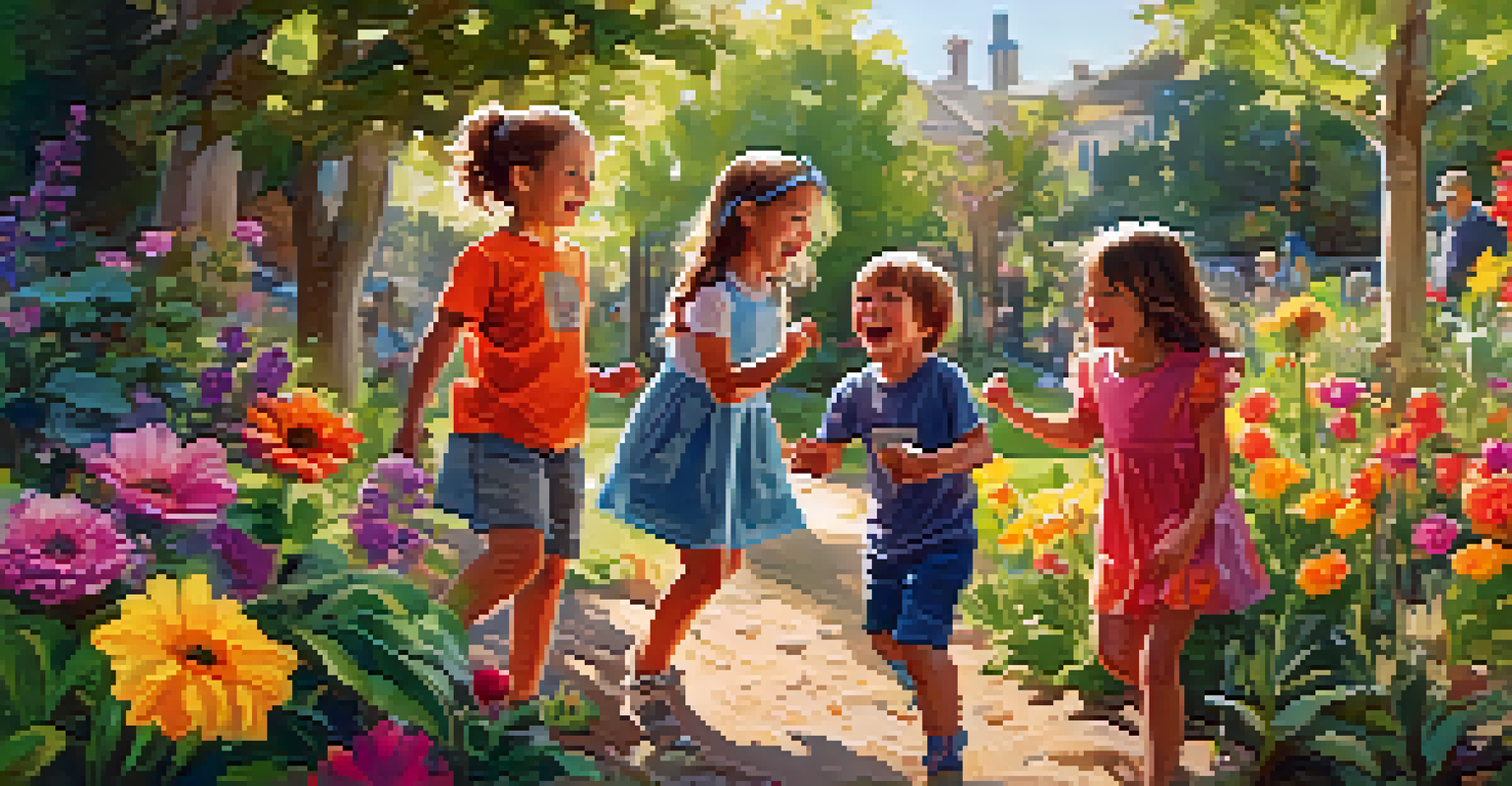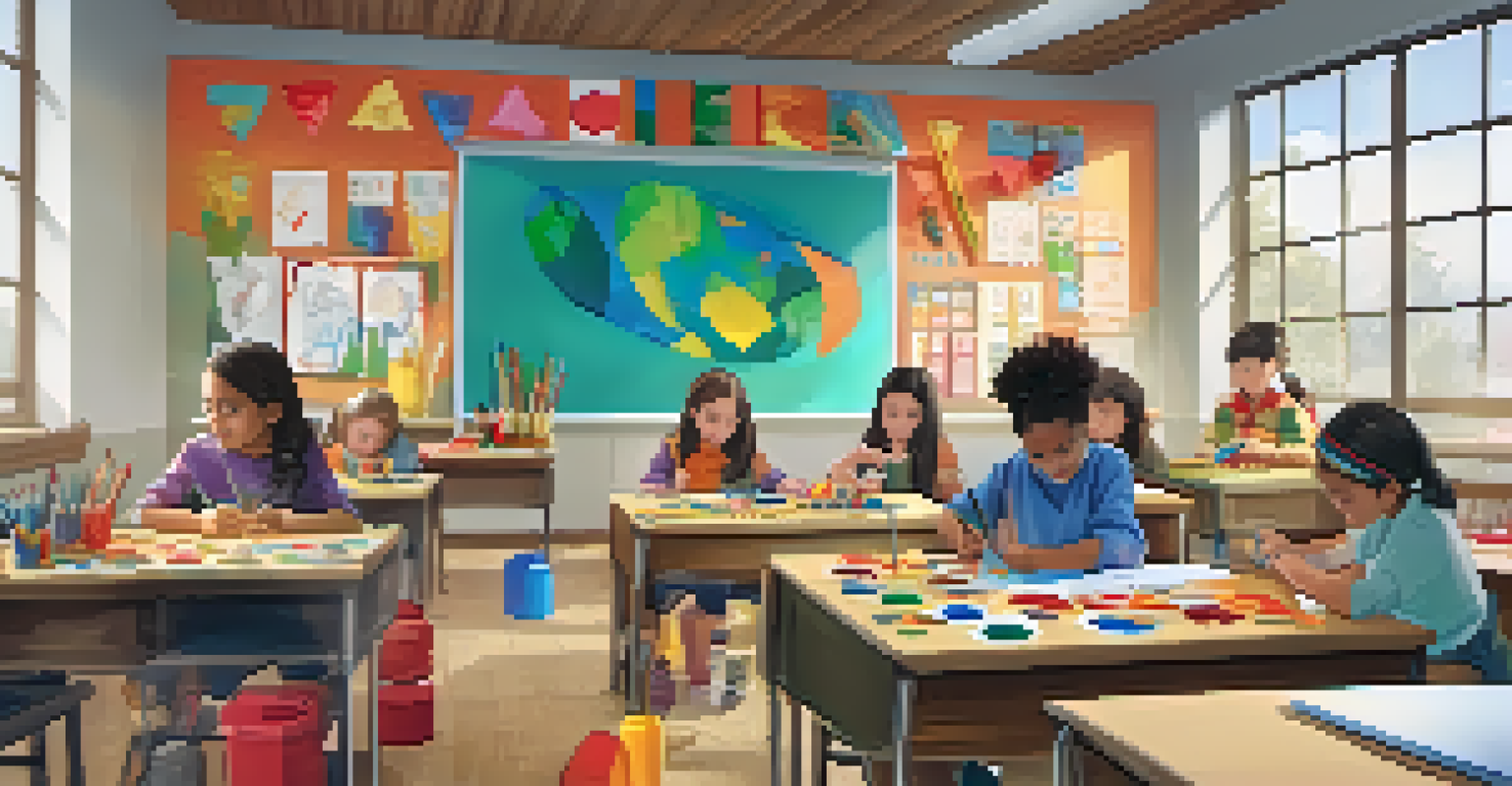Mindfulness and Play: Enhancing Learning Through Fun

Understanding Mindfulness in Learning Environments
Mindfulness in learning is all about being present and fully engaged. It's like tuning into a favorite song—you absorb every note and emotion, making the experience richer. When students practice mindfulness, they become more aware of their thoughts and feelings, creating a stronger connection to the material at hand.
Play is the highest form of research.
This focused awareness not only enhances concentration but also reduces anxiety, allowing learners to explore ideas without the fear of making mistakes. Imagine a classroom where students are calm, centered, and ready to absorb new information; that’s the power of mindfulness. By fostering this environment, educators can help students thrive academically and emotionally.
Ultimately, integrating mindfulness into the learning process can lead to deeper understanding and retention of information. It’s like planting seeds in a garden; with the right care, those seeds can bloom into beautiful flowers of knowledge. As we explore the connection between mindfulness and play, we’ll see how these elements together can create a dynamic learning atmosphere.
The Role of Play in Learning and Development
Play is often seen as just fun and games, but it plays a crucial role in learning and development. Think about how children learn to navigate the world through play; they experiment, take risks, and learn valuable lessons along the way. This natural inclination to explore and create is vital for cognitive and social development.

When students engage in playful activities, they not only enjoy the process but also enhance their problem-solving skills and creativity. It’s like a workout for the brain, where each play session strengthens neural connections. By incorporating play into learning, educators can create a more engaging and effective educational experience.
Mindfulness Enhances Learning
Practicing mindfulness helps students focus and reduces anxiety, creating a more conducive learning environment.
Moreover, play fosters collaboration and communication among peers, promoting teamwork and social skills. Just as a team in a game learns to work together to win, students learn to support each other in a classroom setting. This blend of fun and learning creates a harmonious environment where students feel motivated to participate and explore.
Combining Mindfulness and Play for Effective Learning
When mindfulness and play come together, they create a unique synergy that enhances learning experiences. Picture a classroom where students practice mindfulness exercises before diving into playful, hands-on activities. This combination sets the stage for a focused and enjoyable learning journey.
Mindfulness is a way of befriending ourselves and our experience.
Mindfulness prepares the mind to absorb new information while play engages students’ natural curiosity. For example, a simple mindfulness activity, like deep breathing, can help students center themselves before a group project or game. This calmness can lead to more effective collaboration and creativity during the play session.
By integrating these two elements, educators can cultivate a positive learning environment that encourages exploration and discovery. This approach not only makes learning enjoyable but also reinforces the lessons being taught. In essence, mindfulness and play together create a powerful tool for educators to inspire and engage their students.
Practical Mindfulness Techniques for the Classroom
Integrating mindfulness techniques into the classroom doesn’t have to be complicated. Simple practices, like mindful breathing or short meditation sessions, can be easily implemented. For instance, starting each class with a few minutes of deep breathing can help students settle in and focus on the lesson ahead.
Another effective technique is the '5-4-3-2-1' grounding exercise, where students identify five things they see, four they can touch, three they hear, two they smell, and one they taste. This practice helps students anchor themselves in the present moment, which can reduce anxiety and enhance focus. It’s a quick and engaging way to promote mindfulness without taking too much time away from learning.
Play Boosts Development
Engaging in play allows students to develop problem-solving skills and enhances their creativity while making learning enjoyable.
These techniques can be seamlessly woven into the school day, making mindfulness a regular practice rather than an occasional activity. By doing so, educators can help students develop the skills they need to manage stress and remain focused. The more students practice mindfulness, the more natural it will become, enhancing their overall learning experience.
Fun Activities that Promote Mindfulness and Play
Incorporating fun activities in the classroom can significantly enhance mindfulness and play. Consider games that require focus and attention, such as 'Simon Says' or 'Freeze Dance.' These activities not only entertain but also encourage students to be present and aware of their movements and actions.
Art and craft sessions can also serve as excellent opportunities for mindfulness. When students engage in creative activities, they often enter a state of flow—where they lose track of time and fully immerse themselves in the process. This state of flow promotes relaxation and mindfulness, making art a perfect combination of play and focused learning.
Additionally, outdoor play can be a fantastic way to promote mindfulness. Activities like nature walks or scavenger hunts allow students to connect with their surroundings while engaging in fun exploration. These experiences can deepen their appreciation for nature and enhance their overall well-being, creating lasting memories linked to learning.
Measuring the Impact of Mindfulness and Play in Learning
Evaluating the effectiveness of mindfulness and play-based learning can be challenging, but it’s essential for understanding their impact. Educators can use various assessment methods, such as observing student engagement and participation during activities. Noticing increased enthusiasm and collaboration among students can indicate positive outcomes from these practices.
Another approach is to gather feedback from students about their experiences. Simple surveys or discussions can provide insights into how mindfulness and play have affected their learning. By hearing from students directly, educators can gauge the effectiveness of these strategies and make necessary adjustments.
Combining Mindfulness and Play
Integrating mindfulness with playful activities fosters a positive learning atmosphere that encourages exploration and deeper understanding.
Additionally, tracking academic performance and emotional well-being over time can help measure the long-term benefits of integrating mindfulness and play. Improved focus, reduced stress, and enhanced creativity are all indicators of success. By systematically evaluating these aspects, educators can continue to refine their approach and foster an engaging learning environment.
Building a Mindful and Playful Learning Community
Creating a mindful and playful learning community requires commitment from both educators and students. It starts with a shared vision of fostering a positive and engaging educational experience. When everyone is on board, it sets the stage for collaborative efforts to integrate mindfulness and play into daily routines.
Educators can lead by example, demonstrating mindfulness practices and encouraging playful approaches in their teaching. This can inspire students to embrace these values in their own learning journeys. Just as a garden flourishes with care, a classroom community can thrive when everyone contributes to a culture of mindfulness and play.

Moreover, involving parents and guardians in this journey can enhance the impact of these practices. Workshops or informational sessions can help families understand the importance of mindfulness and play, encouraging them to reinforce these concepts at home. Together, they can create a supportive ecosystem that fosters growth, learning, and well-being.